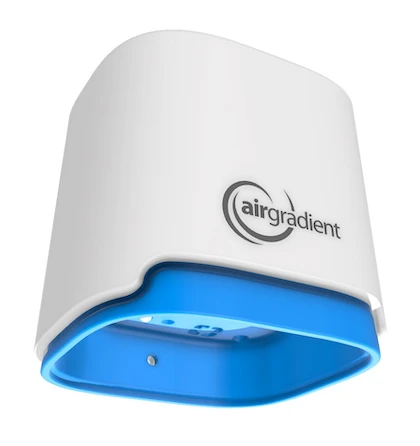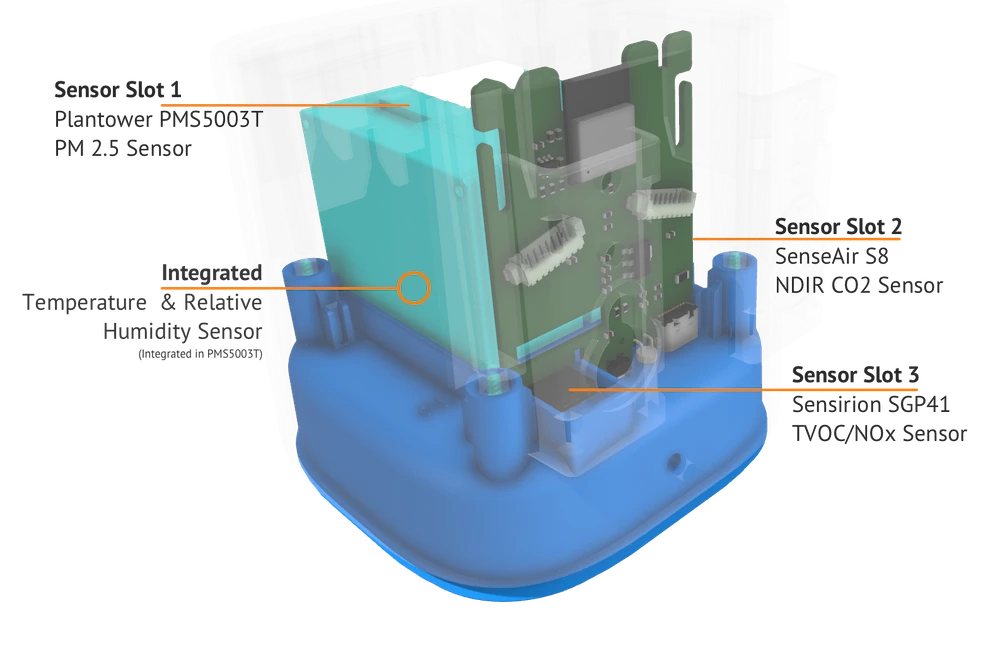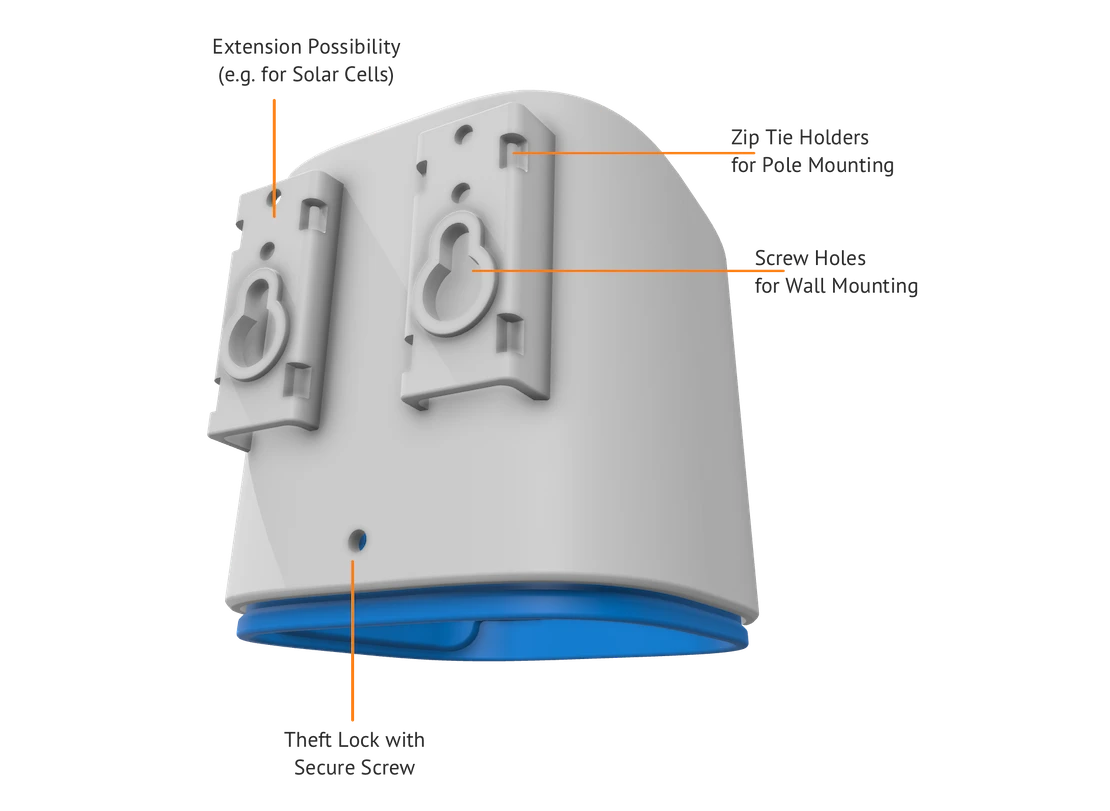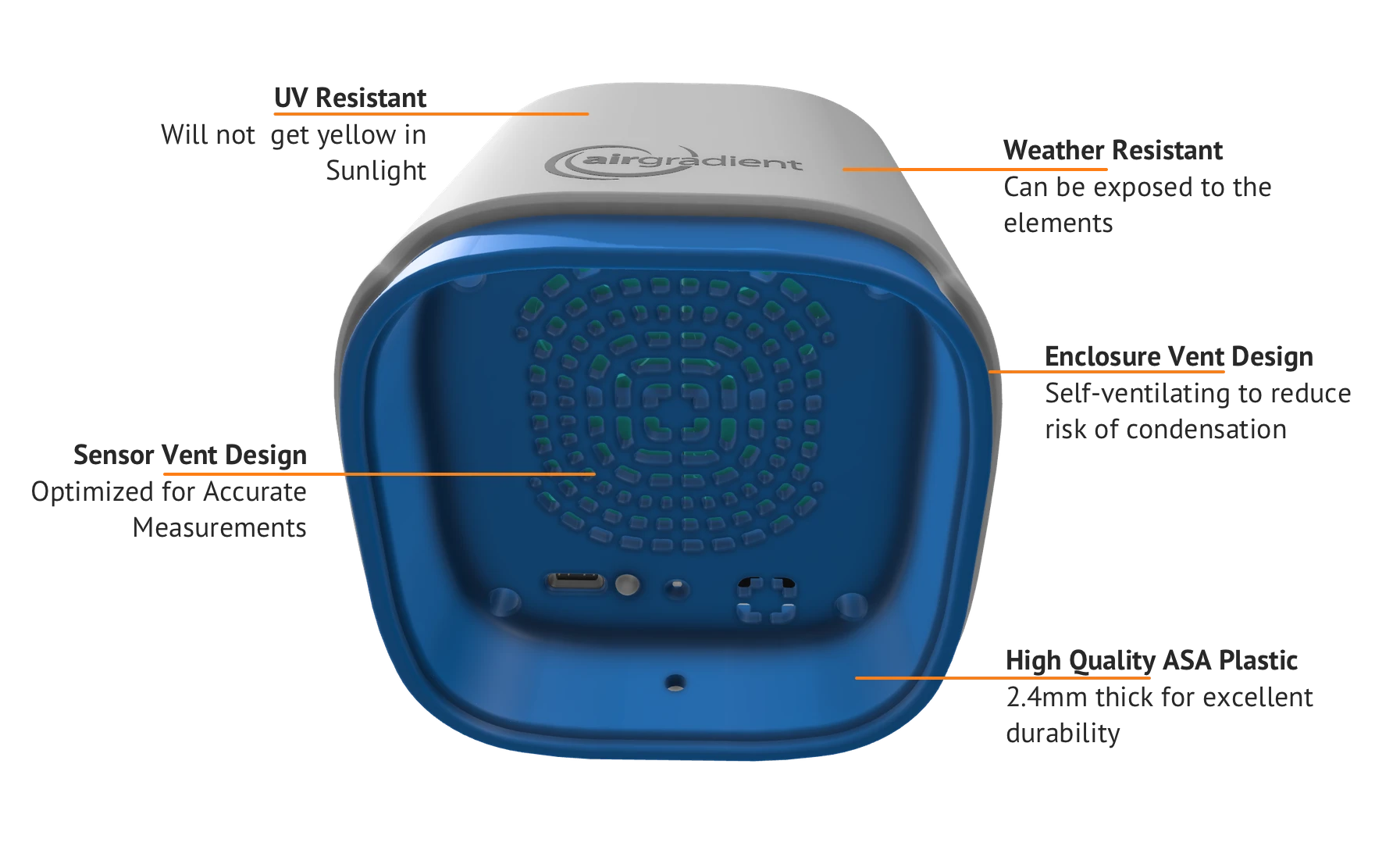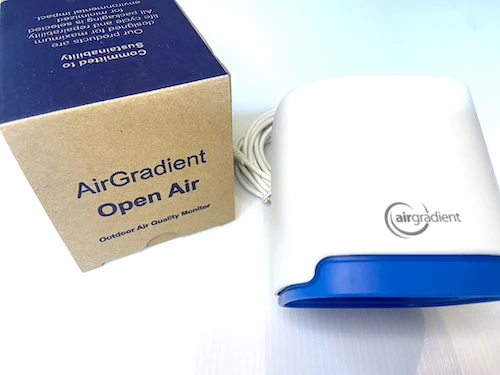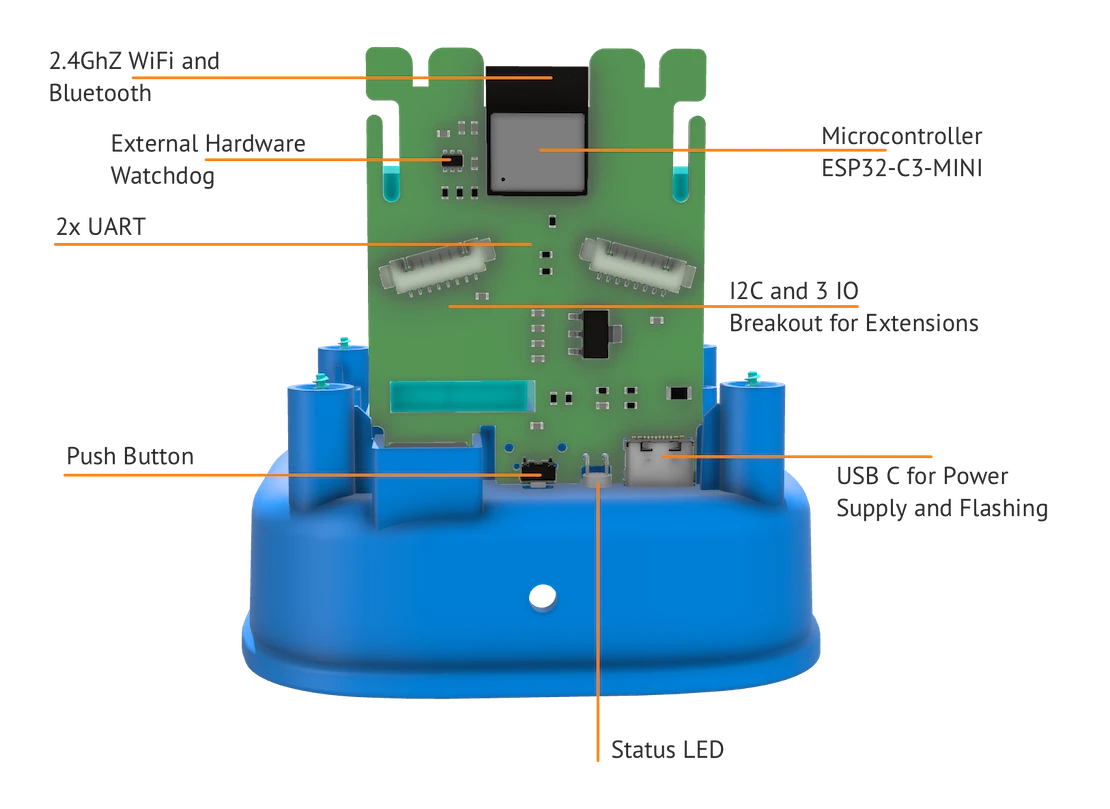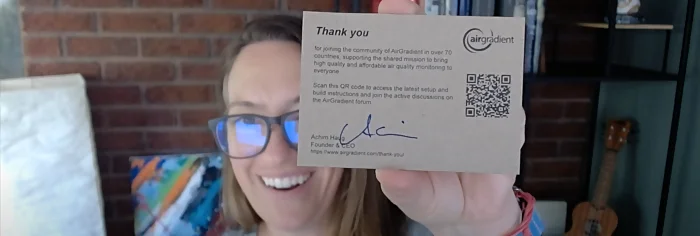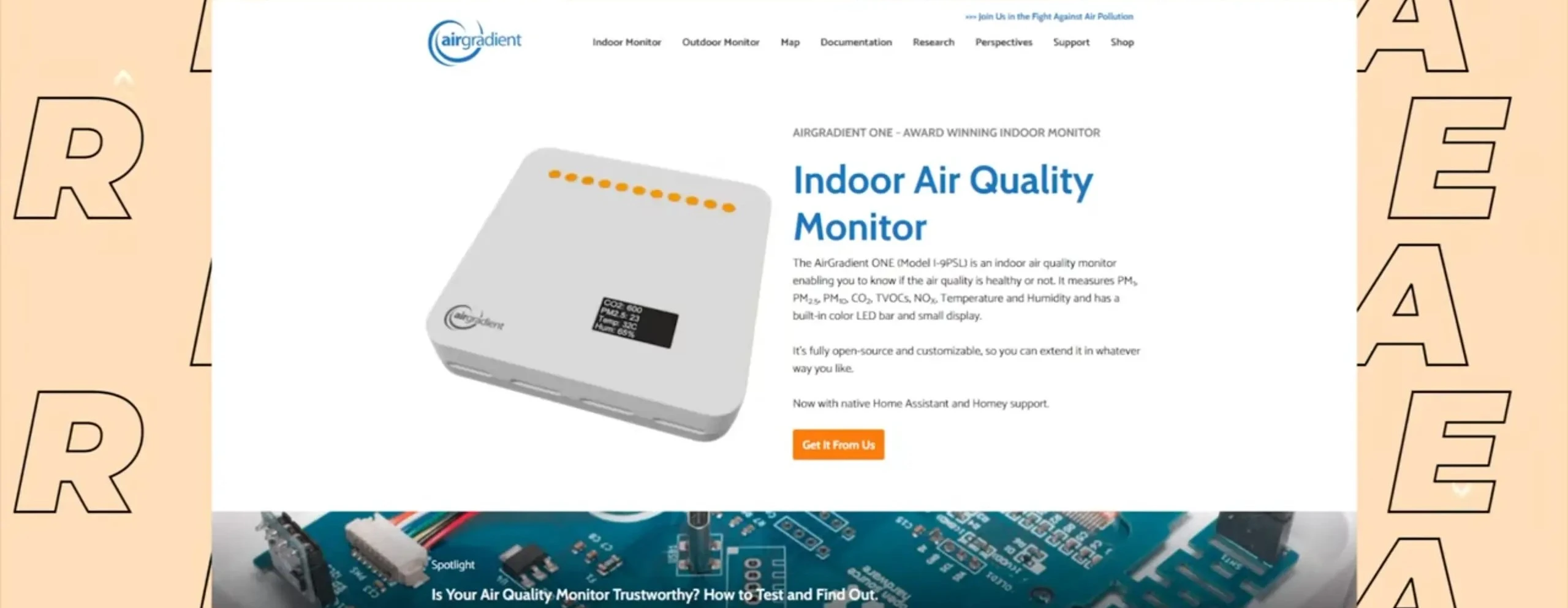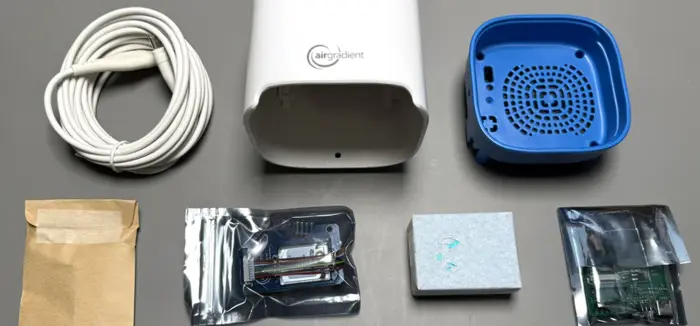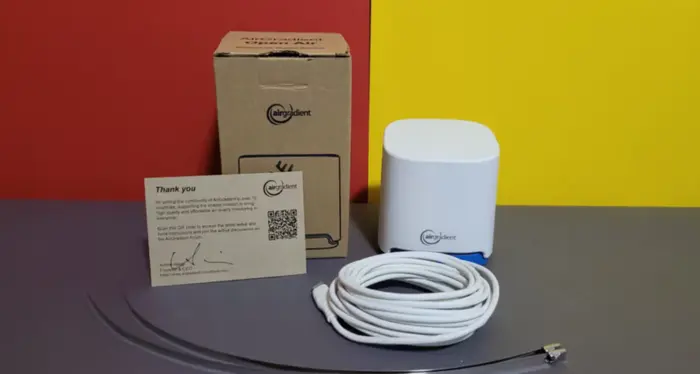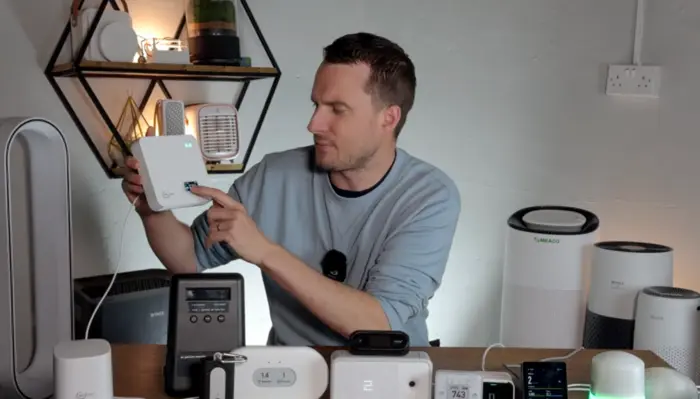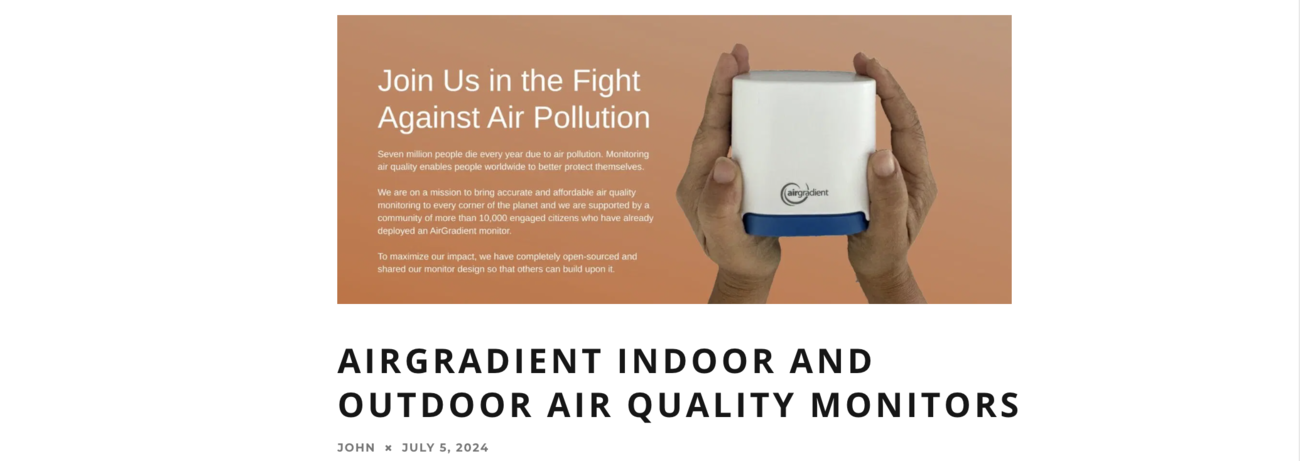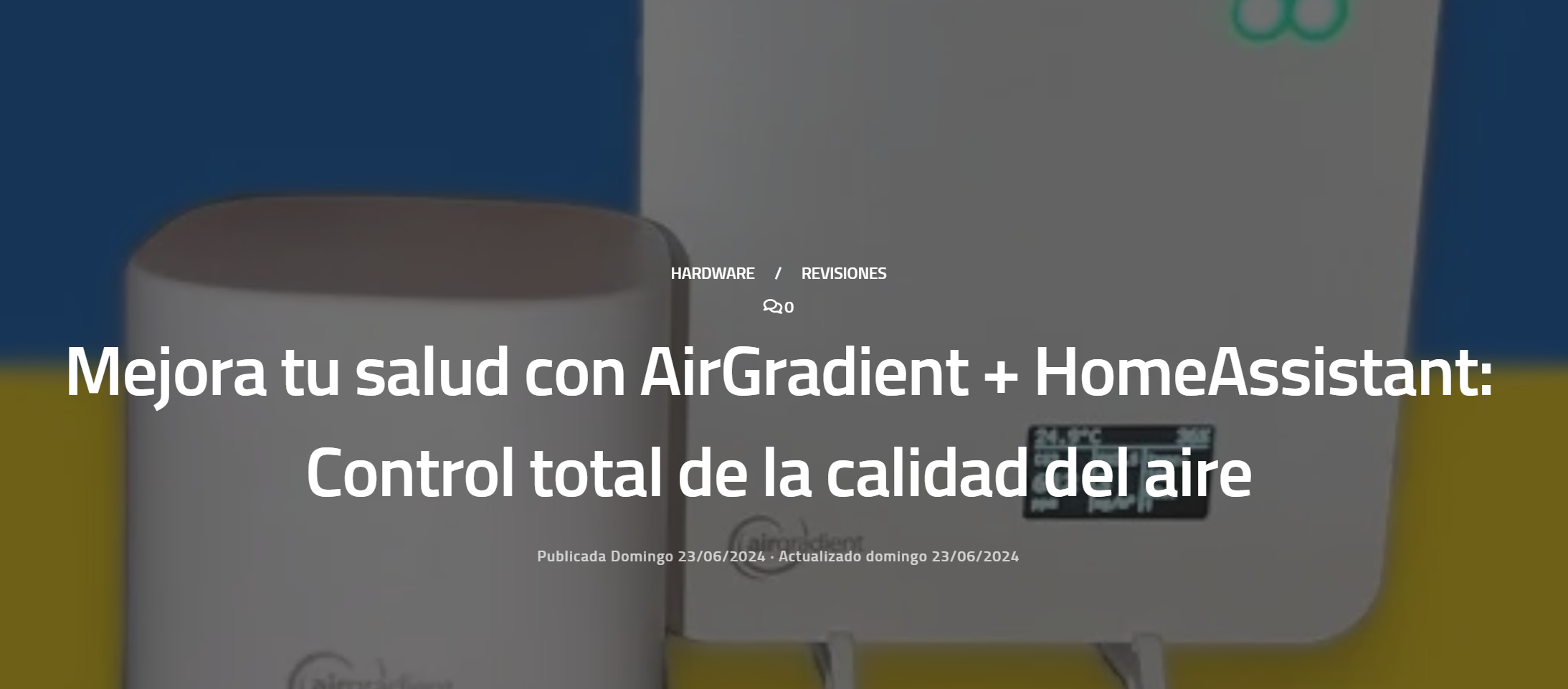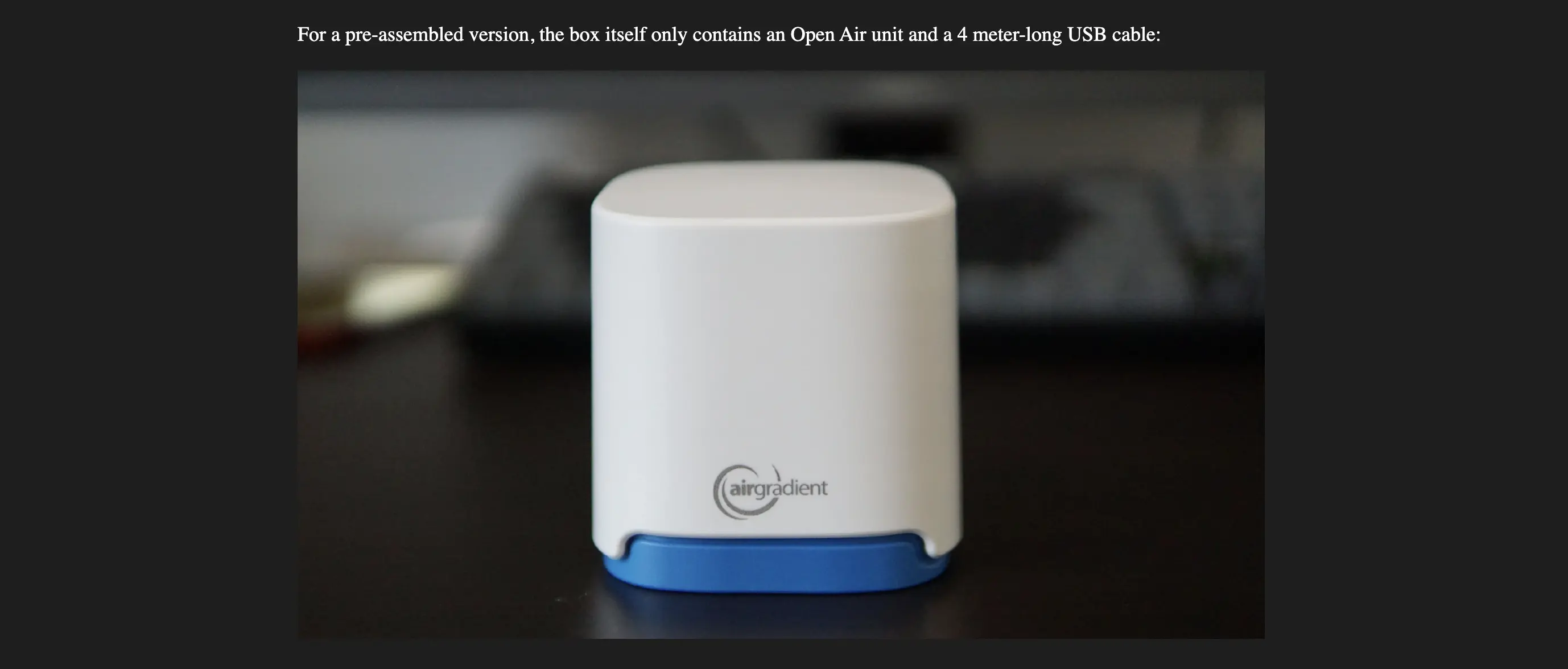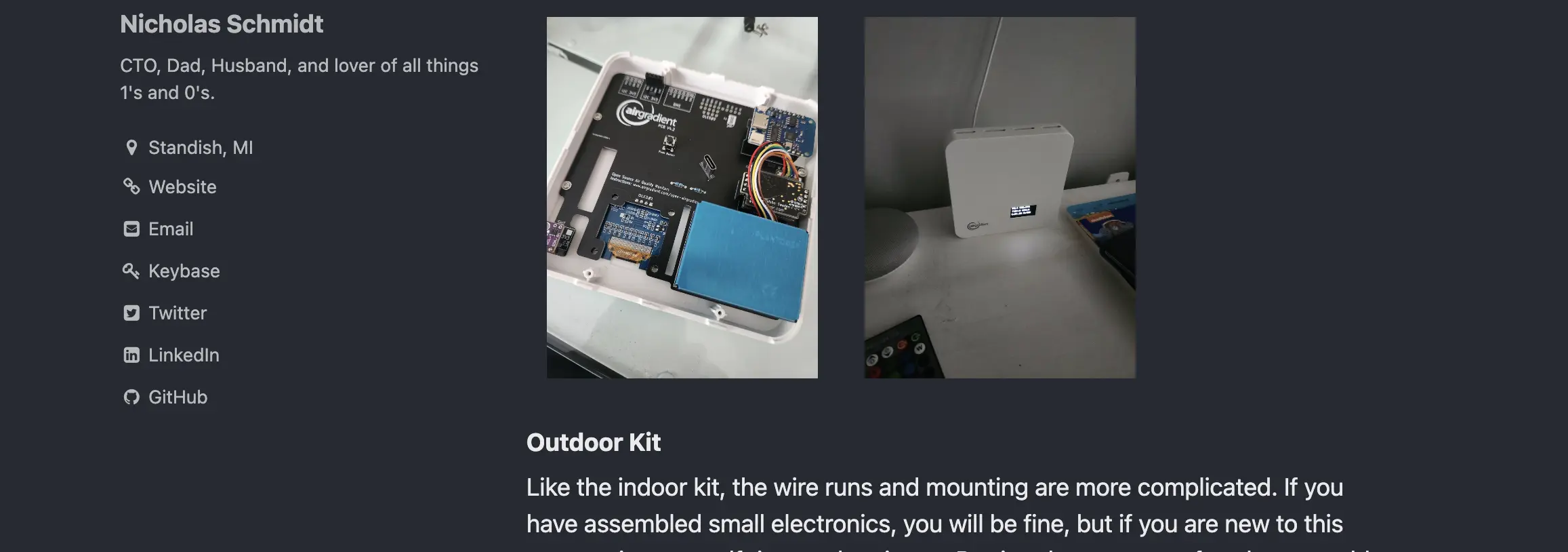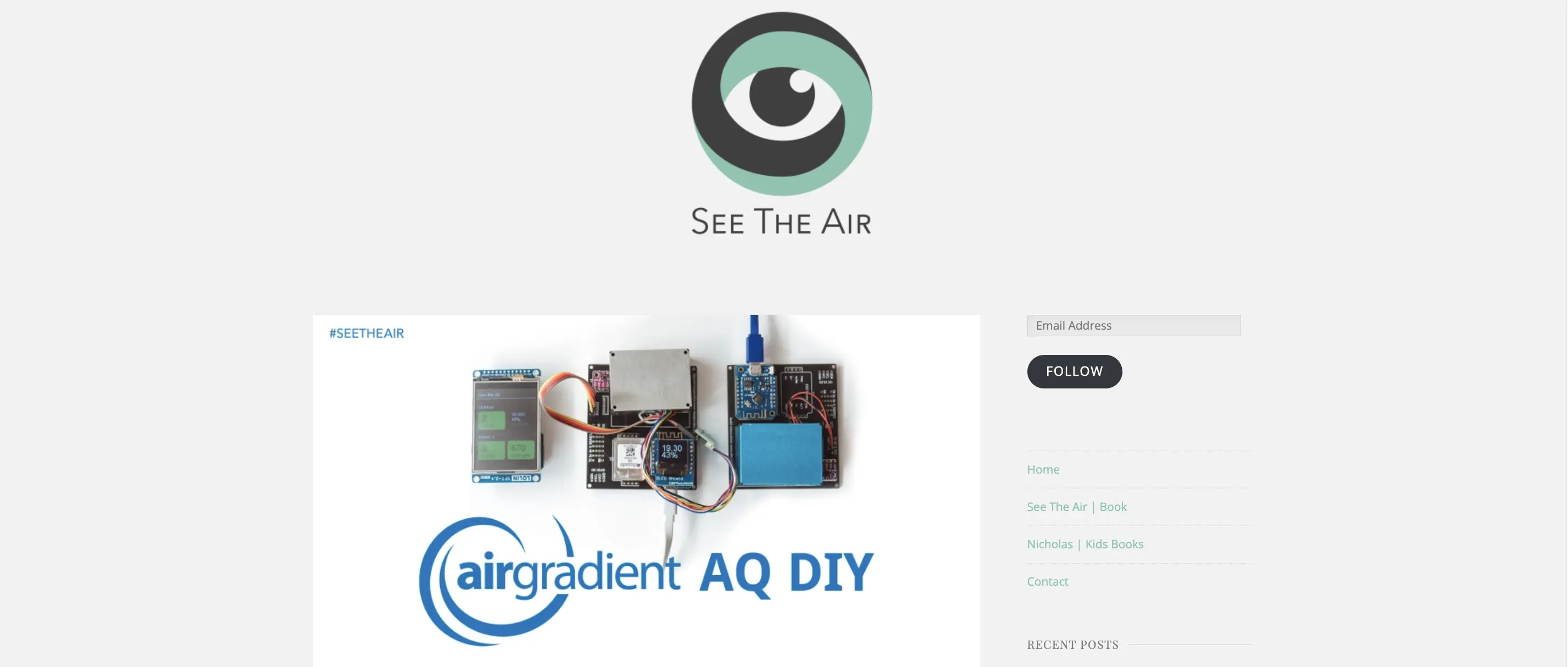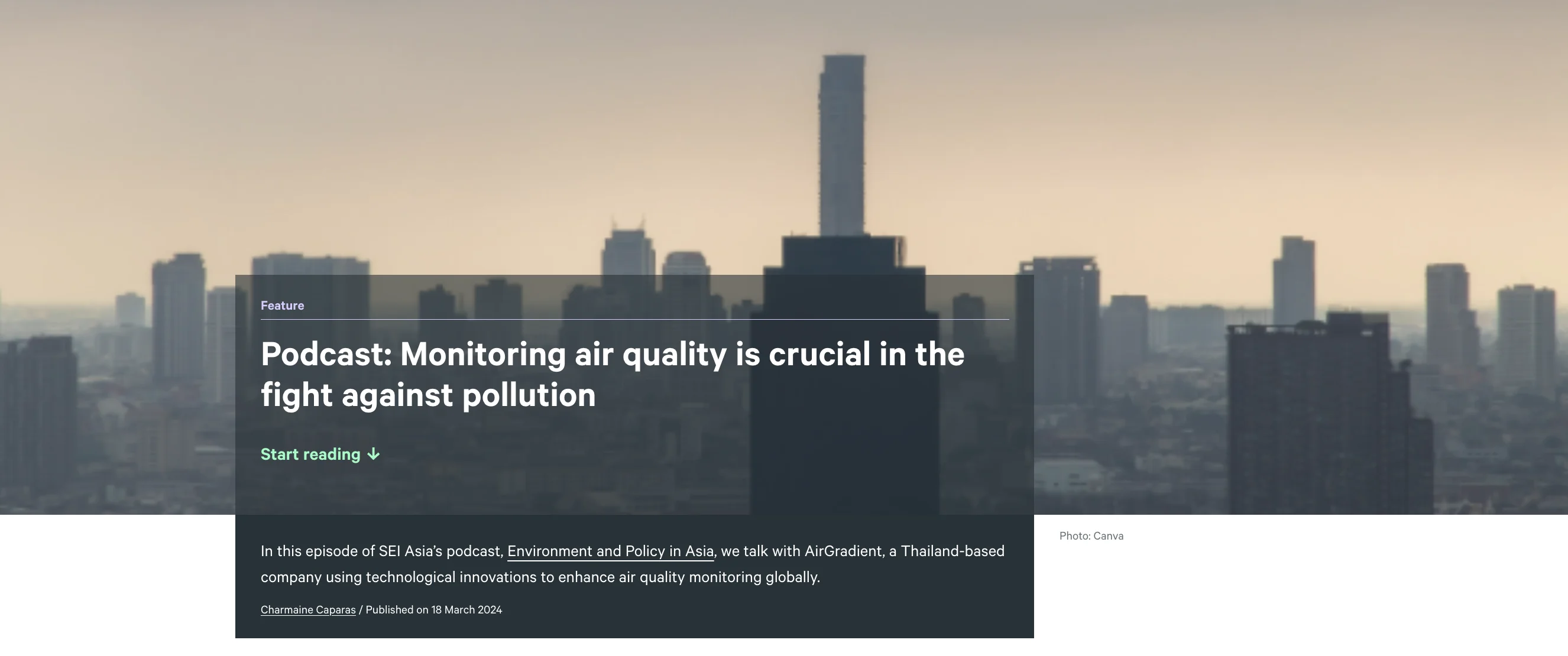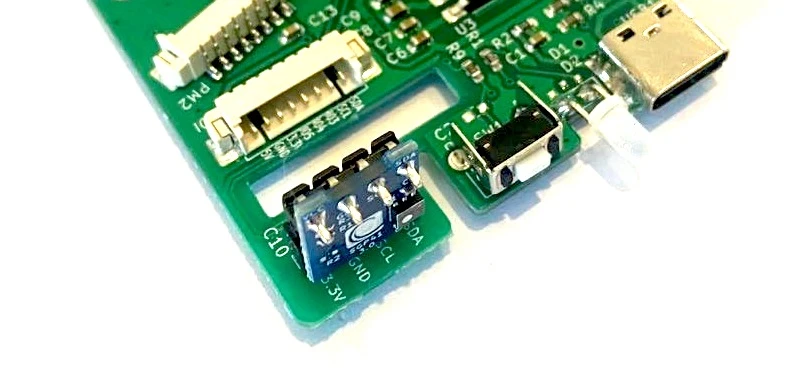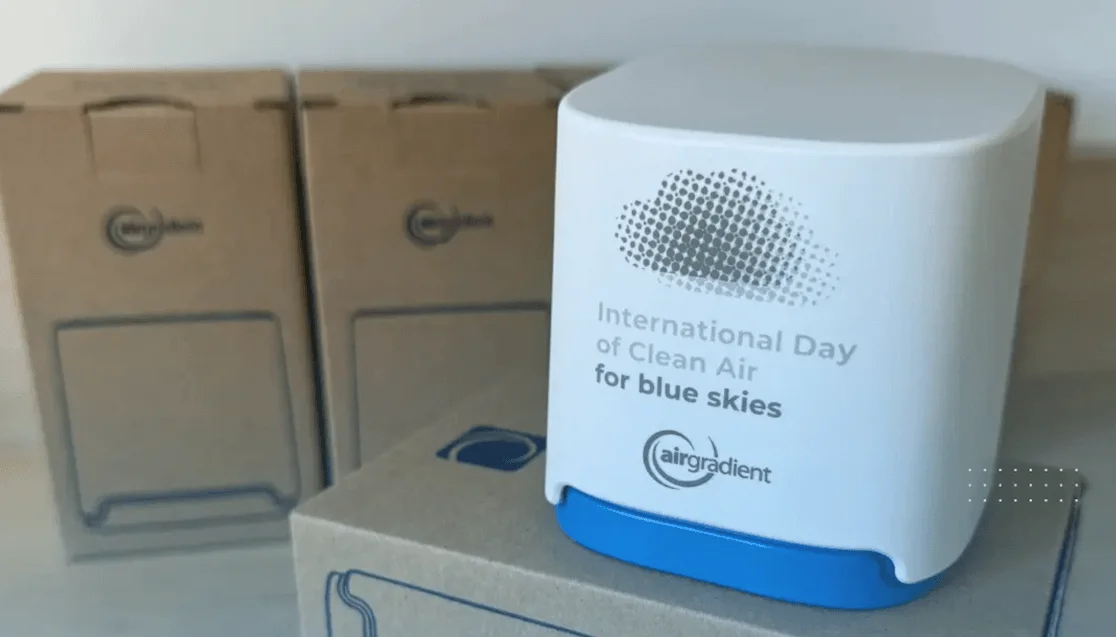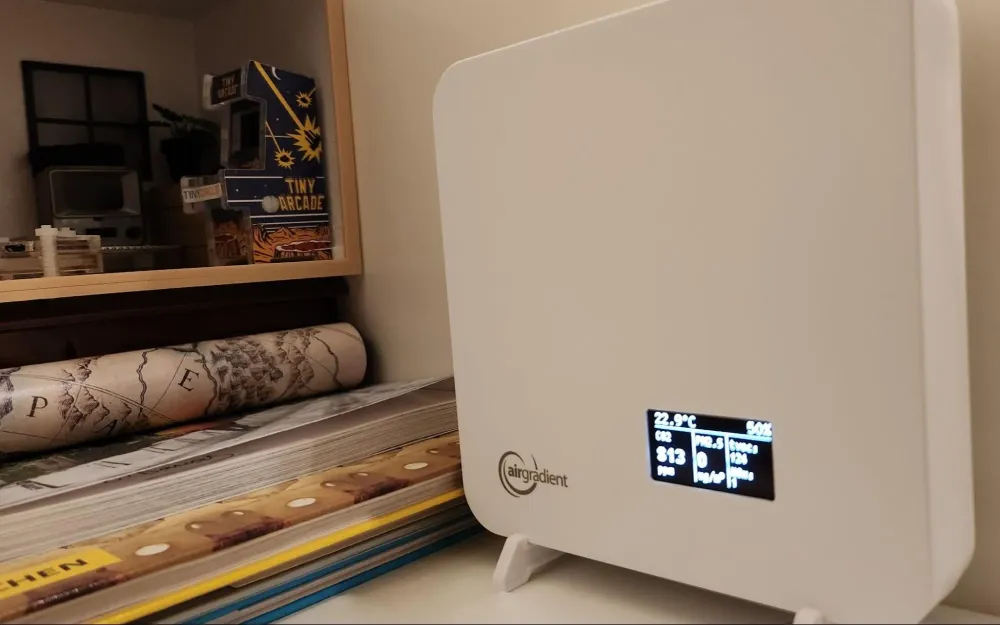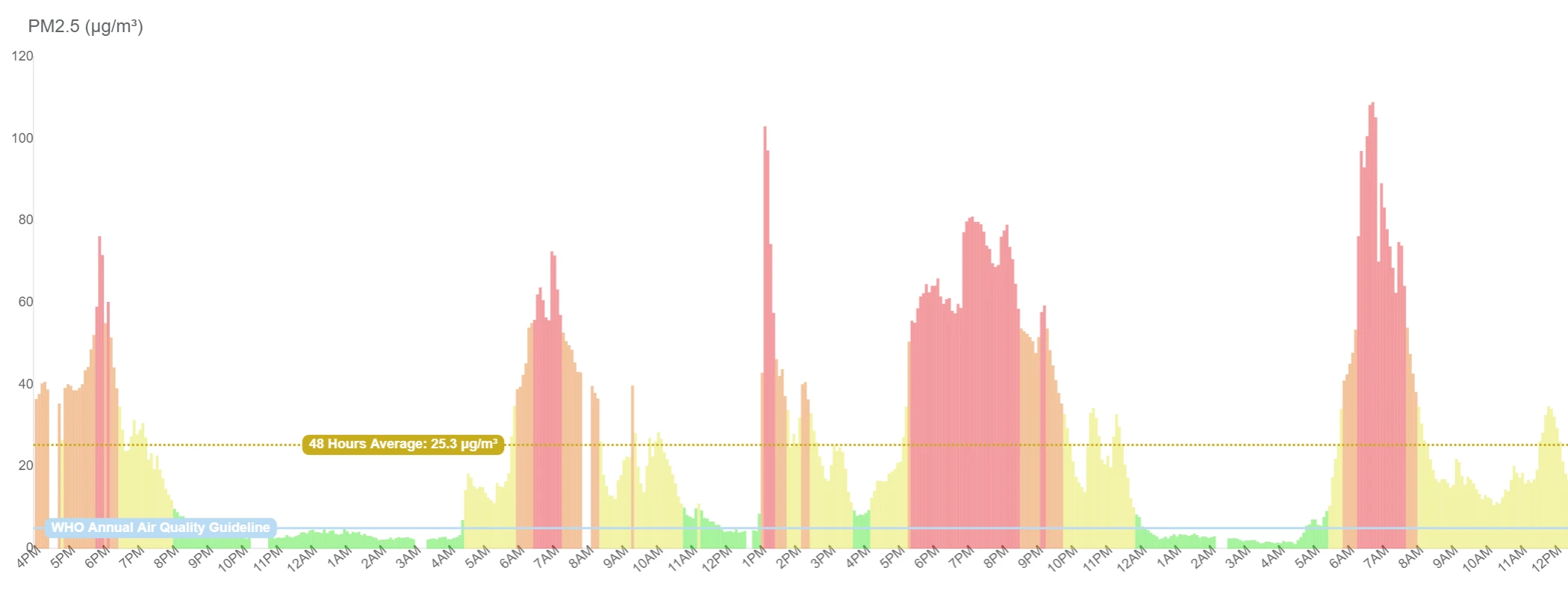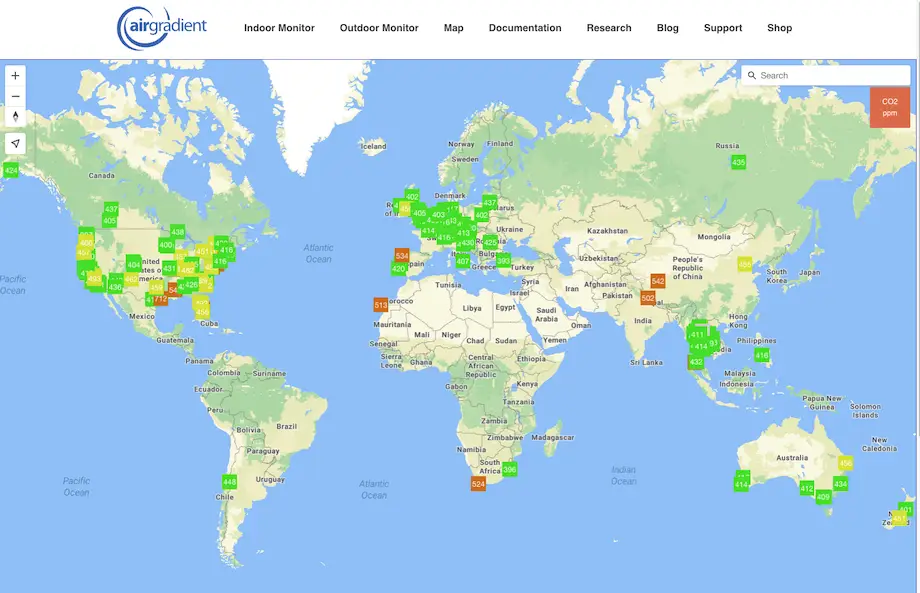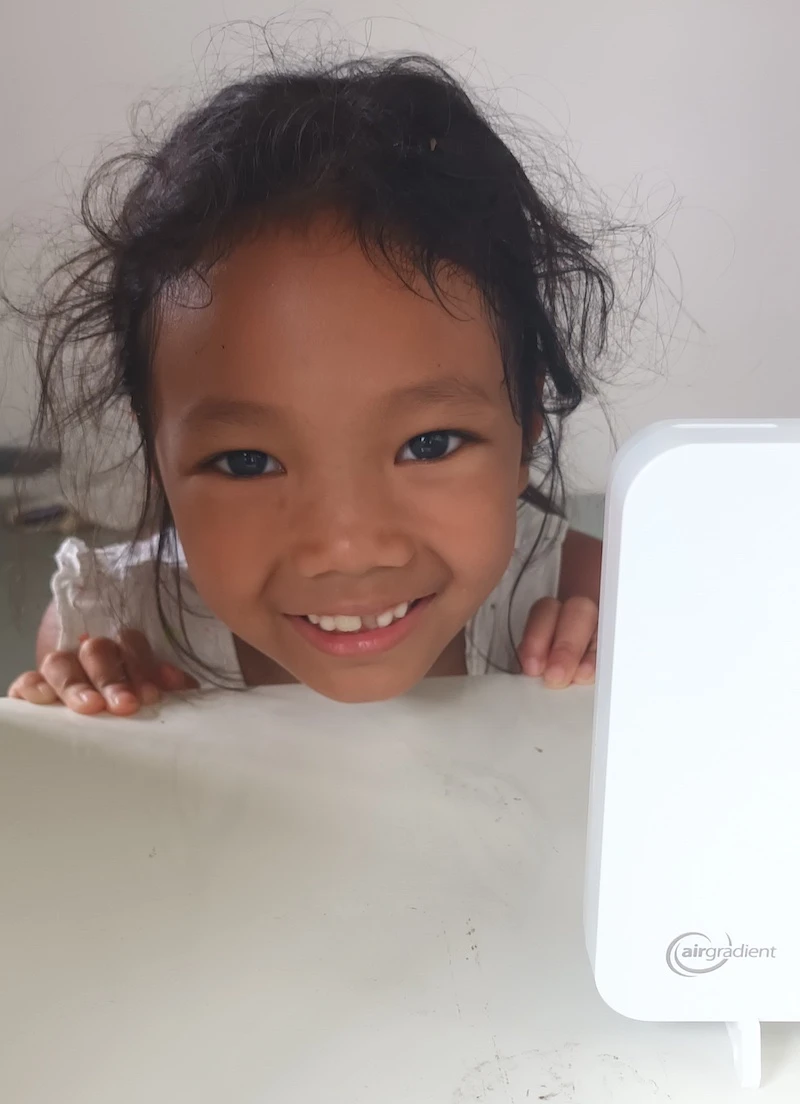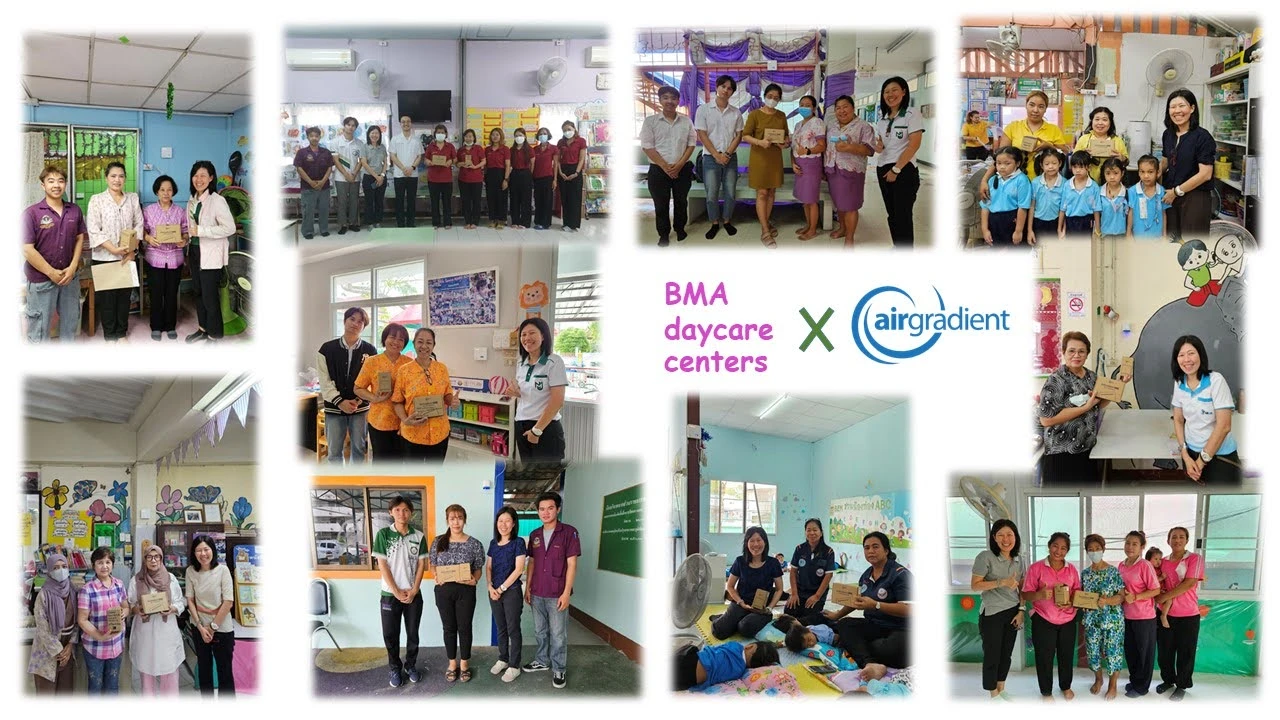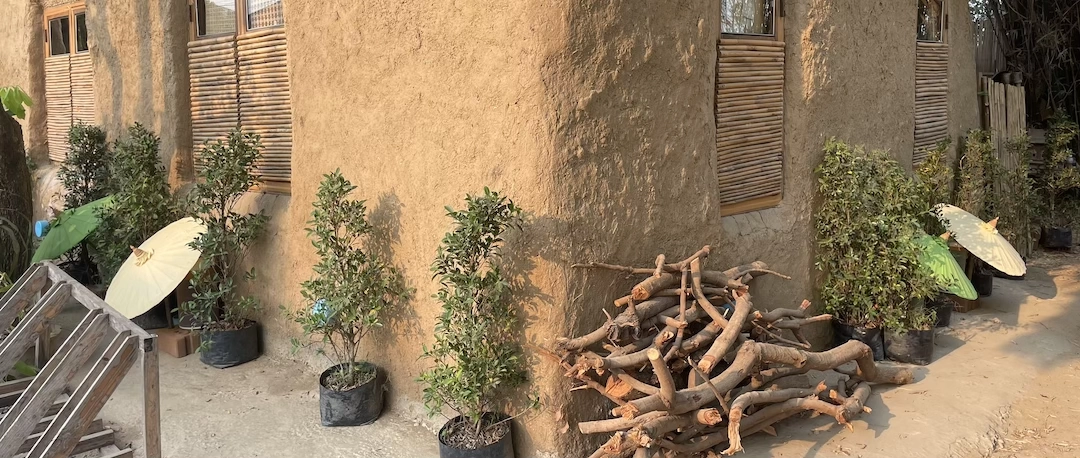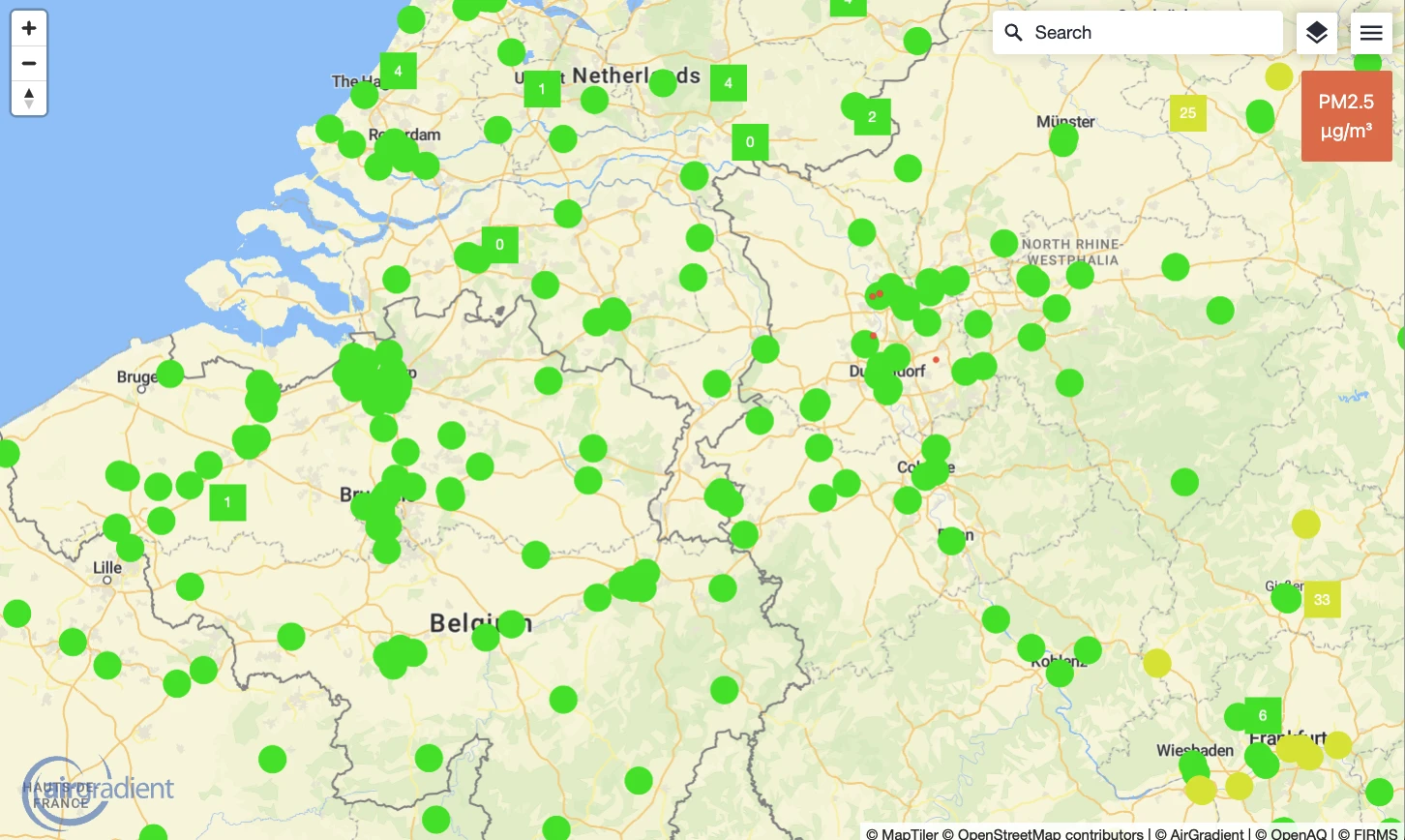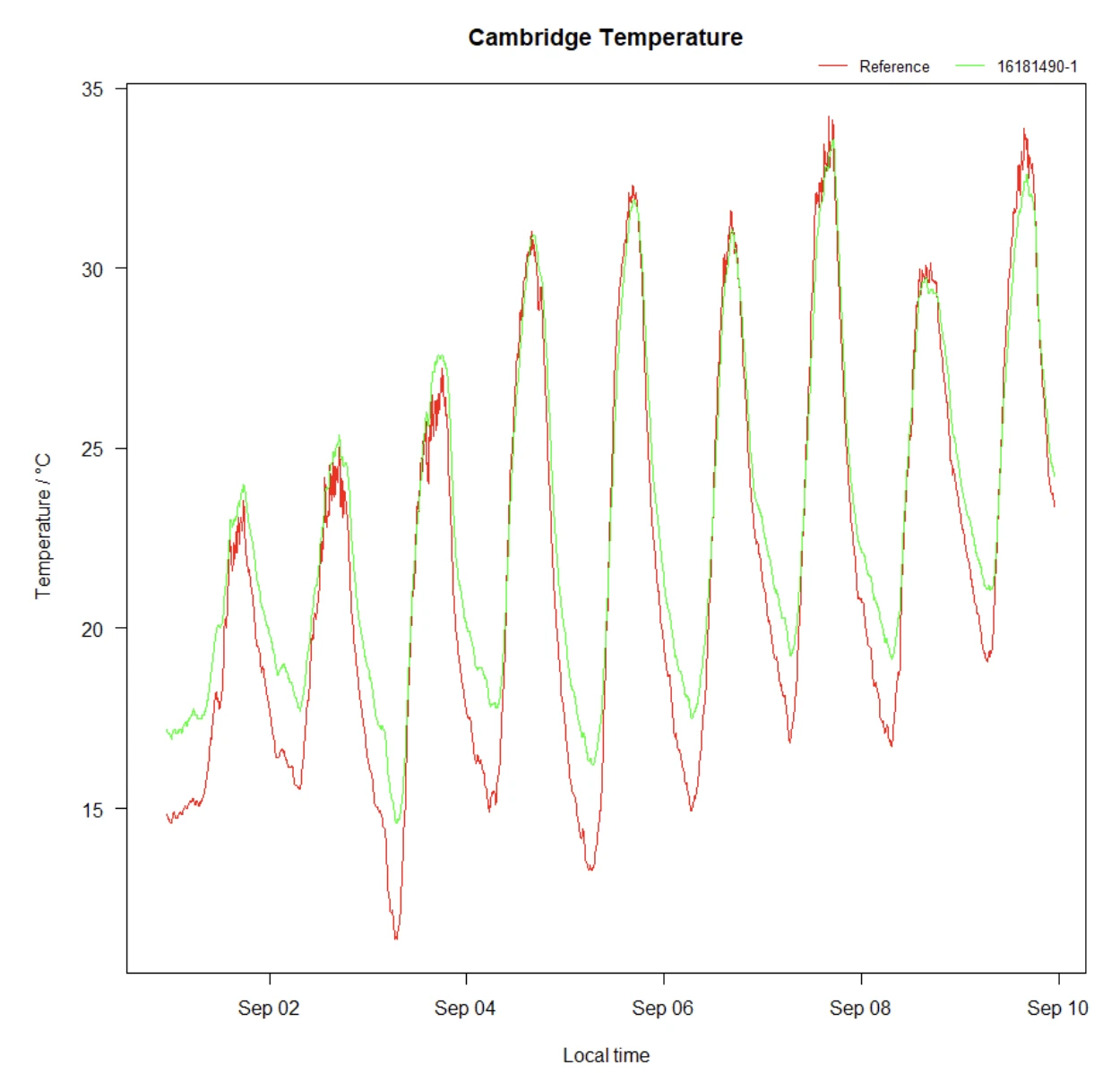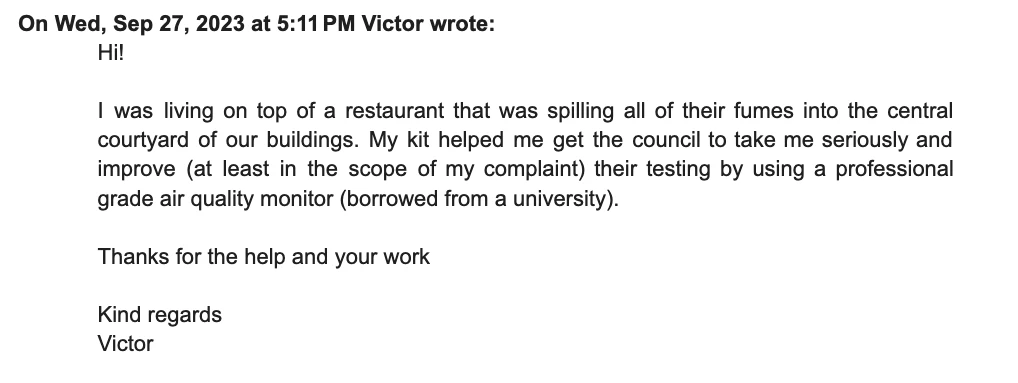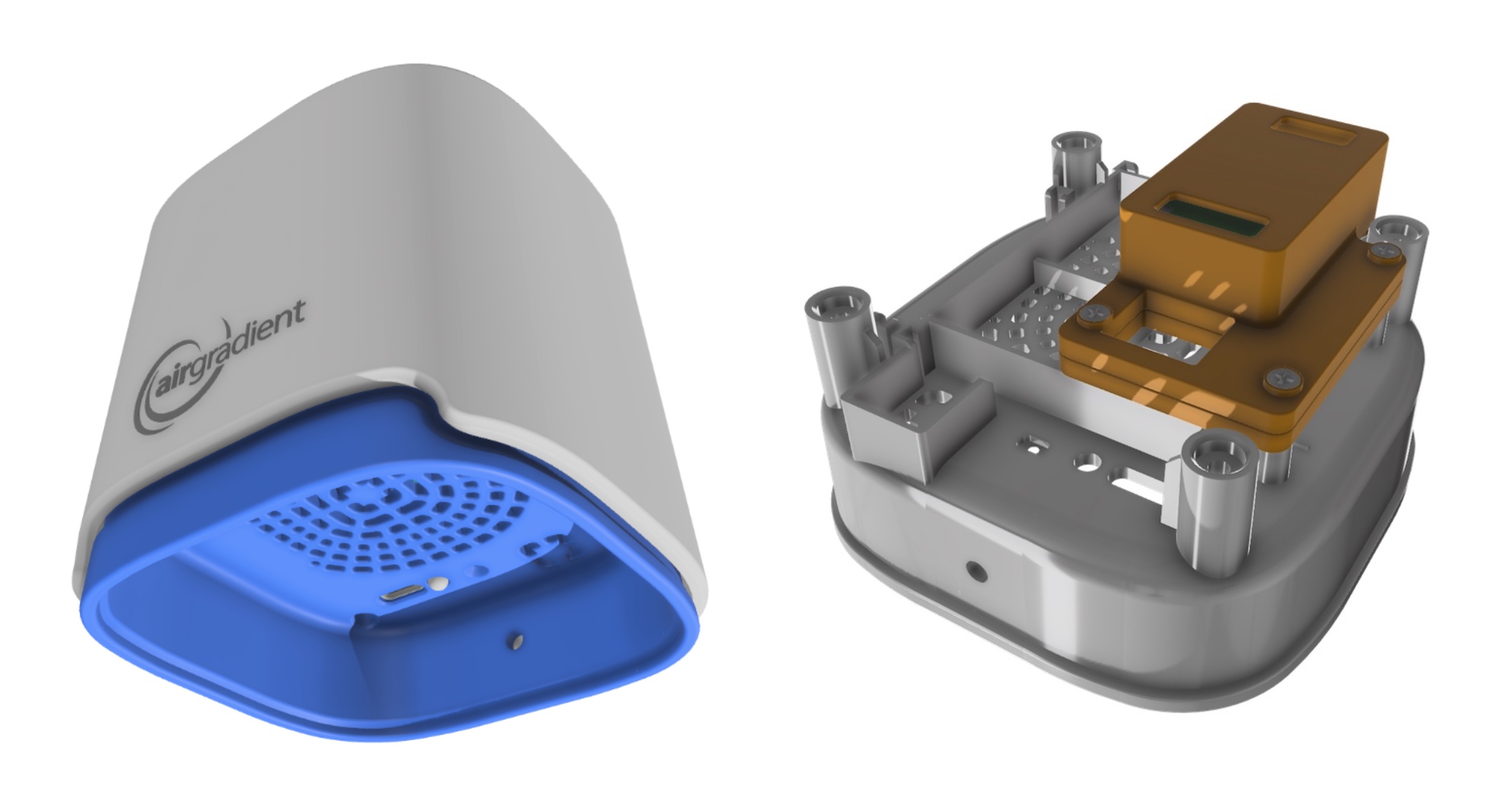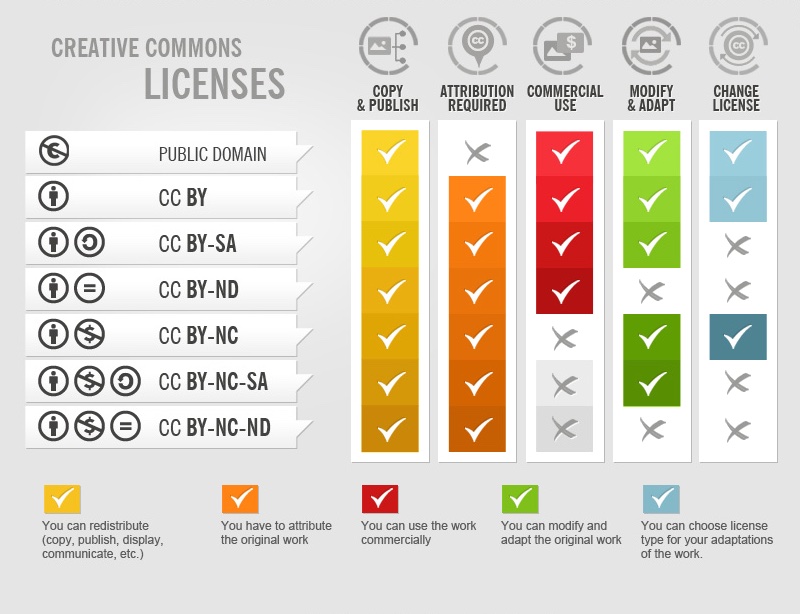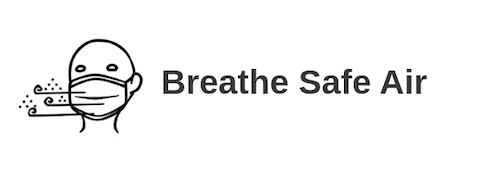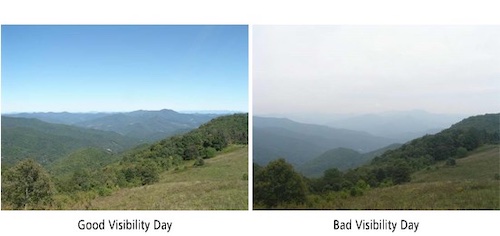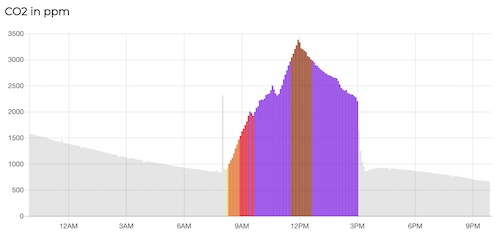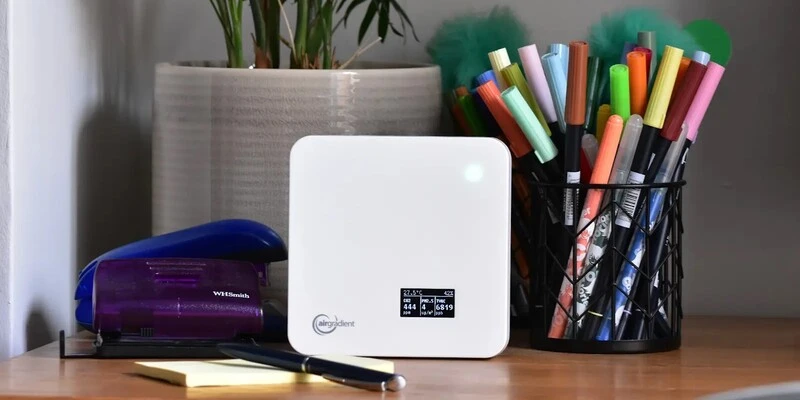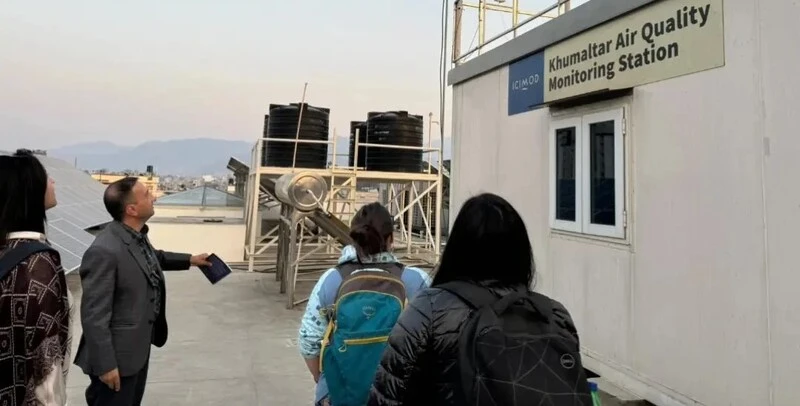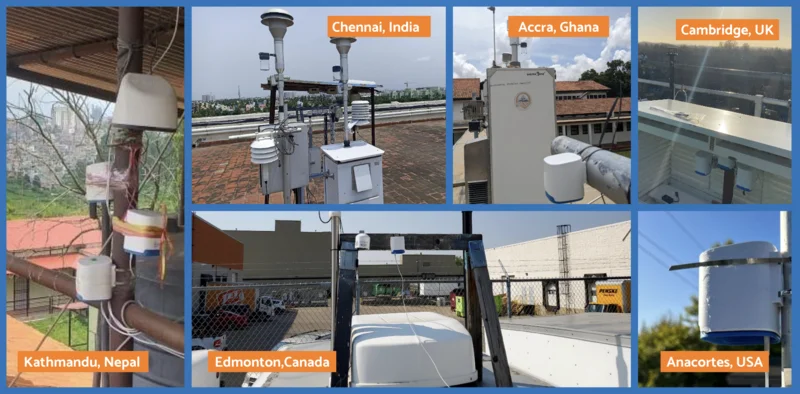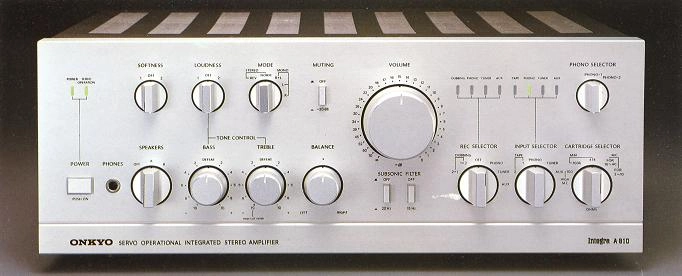The monitor measures PM, CO2, TVOCs, NOX, Temperature and Humidity.The PM sensor (Plantower PMS5003T) measures particulate matter, especially smaller particles like PM2.5 have the potential to cause significant harm to our well-being. These tiny particles are released into the air through various sources such as vehicle emissions, industrial activities, burning of fossil fuels or wildfires. When inhaled, these small particles can penetrate deep into our respiratory system, leading to a range of health issues. Long-term exposure to PM2.5 has been linked to respiratory and cardiovascular diseases, including asthma, bronchitis, heart attacks, and even premature death.
The ENS210 takes measurements inside the PMS5003T module to increase PM accuracy. Due to the heat inside the module, these readings may deviate from ambient temperature and humidity levels.
The CO2 sensor (SenseAir S8) can give you valuable information about local emission sources. These elevated CO2 levels can then also indicate other harmful gases that are often emitted with CO2 like SO2, NO and NO2. These emissions are not always visible with only measuring PM due to for example good filters in power plants or factories. Another use case is to detect leakage from underground carbon storage facilities. Please note that the sensor is not accurate enough to measure the exact atmospheric CO2 increases (currently around 430ppm), however our tests show a very high agreement with reference instruments.
The monitor also includes the Sensirion SGP41 TVOCs, NOX sensor. This sensor shows relative spikes in total volatile organic components and NOX based on the Sensirion VOC Index. Even though VOCs are typically associated with indoor sources, VOCs can also occur outdoors for example emitted from chemical factories, petrol stations, natural gas leakages, burning of garbage etc. Please note that VOCs are also triggered by harmless substances like ethanol or sunscreen. So an elevated value does not necessarily mean a harmful event.
We work very closely with a number of leading universities on air quality monitoring and our monitor has been selected for the largest study of classroom air quality in the world due to its performance and affordability. You can read more about our work with research institutions on our research page.
